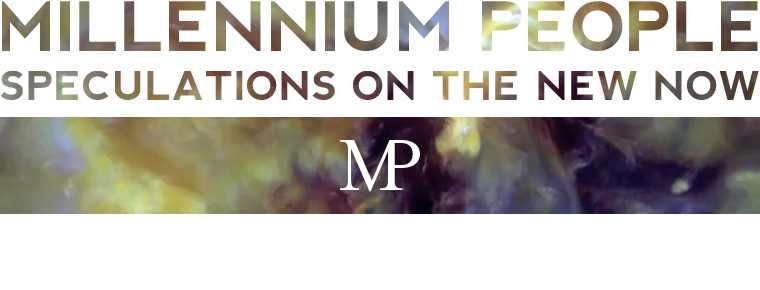
Green Room, by lanscape artist collective A12, at the Barbican
The Barbican's got an exhibit on at the moment called 'Radical Nature'. They are quite firm about not taking photos over there, and I was ultimately asked to leave as a result. The focus for the exhibition is examining the physical – and conceptual – separation of nature from humanity, as well as questioning what 'natural' really means.
The show was a mix of hits and misses, but on the whole very good. I highly recommend it. I couldn’t help but think of what a friend of mine, a landscape architect, said recently: “everyday I receive more CVs from architects, but you know they have no feeling for landscape, they only apply because the Crisis forces them to.”
It is certainly true that commercial architecture (probably stemming from Corbu’s laissez-faire attitude to the landscape) has neglected landscape for a long time, only treating it in order to better draw attention to their iconic masterpieces. So while this show presents something new, I can’t help but feel that the disproportionate overrepresentation of architectural firms is its weak point. It needed something fresher, something new.
A group called A12 installed a small wooden chamber to sit beneath a skylight, (the “Green Room”). Inside was something like the art of Yayoi Kusama, but not so well finished, with mirrors reflecting an infinity of Selfs back at me. The interior was a trite English garden, replete with baroque urn and topiary shrub. What I didn’t understand was whether the artists were supporting the English bourgeoisie or mocking them – irony is getting too subtle for me these days. In any case, it was a pretty dubious work, and not indicative of the general standard.
Anya Gallaccio had lovingly collected all the parts of a beech that had been felled, reassembling the tree in the gallery using bolts and plates. It was vaguely painful to look at, the sinewy torsions of the beech evoking an arboristic empathy. Agnes Denes (who I’ve posted about before) was also there, though this is not the first time I have seen her work exhibited at the Barbican).

Anya Gallaccio's butchered beech
One piece that seems utterly redundant is Honeypump in the Workplace by Joseph Beuys. In 1977 he constructed a system to pump 2 tonnes of honey through a ship’s engine and then out round a room in transparent tubes. The display is the original tubes and the original ship’s engine, but no honey. One can only wonder at this act of reification (is all art reified anyway?), and ask why an art piece devoid of the element that made it interesting is still circulated, and particularly why it was included in a show about radical nature.
As a bit of an aspiring psychogeographer, I was really impressed by Lara Almarcegui’s pamphlet (free) on the urban, ex-industrial or natural sites that are under threat by the 2012 Waste of Everyone’s Time & Money. It serves as a great reminder that the natural environment is not static – to be confined, Blade Runner style within the walls of humanity’s white cubes – but an equilibrium in flux.
Final note: the 9 square metres of rainforest, apparently extracted à la Matta-Clark, glued together and then flipped on its side was great, floodlit by sun lamps to keep the trees growing horizontally. As were the Ant Farm projects, and the idea for floating gardens, where plants that collect nutrients from the air are strapped to balloons and sent into space. Go see it, I went 3 Fridays ago with a friend, and we were the only ones there.

No comments:
Post a Comment